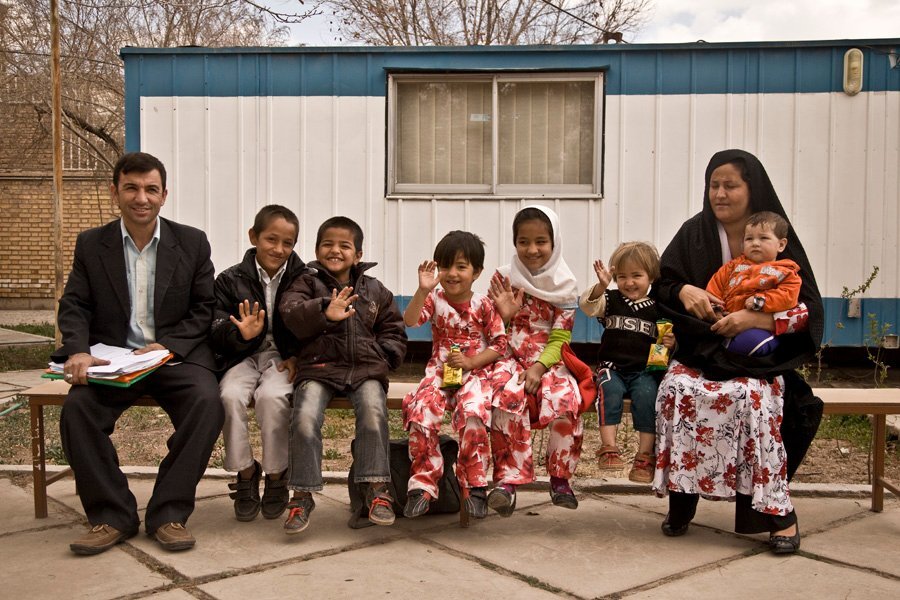TEHERAN – Over the past four decades, the Iranian people have shown impressive hospitality and generosity to refugees as the country is the eighth largest receiving nation for displaced people.
Around 82 million people are displaced from their homeland, 26 million in a foreign country, 86 percent of the refugees are taken in in developing countries.
“Heal, Learn and Shine Together” is the theme of World Refugee Day 2021, which is aimed at people of all faiths around the world in order to collectively take in stateless people, displaced persons, refugees and others who have been forced to flee their homes.
In recent years, Iran has accepted more and more refugees without papers or passport holders into the national system and has taken in nearly a million refugees – most of them Afghans.
In the face of the pandemic, all refugees, including those without papers, benefited from access to free primary health services and free COVID-19-related tests, treatments and hospitalizations, as did Iranian nationals. The country has generously considered refugees over the age of 75 for vaccination against the coronavirus.According to the latest statistics, over 3 million Afghans live in Iran – around 780,000 Afghan refugees, over 2 million undocumented Afghans and another 600,000 Afghan passport holders with Iranian visas.
For more than 40 years, the government and people of Iran have shown the Afghans an incredible hospitality and generosity that can be seen in very few countries in the world that accept refugees.
Over the past year, the COVID-19 pandemic has impacted people’s lives around the world, causing millions of deaths, an economic recession, restrictions on gatherings and other serious restrictions. and the refugees were no exception and faced the consequences.
Iran, which has dealt with the virus, has also been affected by US sanctions. In fact, getting international aid on time has been a major challenge and has also been a barrier to importing medicines and medical equipment. So part of the refugees’ financial problems is related to unilateral sanctions.
Given the diminishing opportunities in Iran and the still unsafe situation in Afghanistan, refugees have a harder time getting by.
However, in the face of the pandemic, all refugees, including those without papers, benefited from access to free primary health services and free COVID-19-related tests, treatments and hospitalizations, just like Iranian nationals.
The same happened for vaccination when the country generously considered refugees over the age of 75 for vaccination against the coronavirus.
At that time, the Iranian Red Crescent Society (IRCS) asked the International Committee of the Red Cross (ICRC) to provide 2 million doses of vaccine to vaccinate Afghan refugees. So far, the international community has made no attempt in this regard.
It is noteworthy that COVID-19 has shown us that we are all connected, and without a global response, the pandemic will not be eradicated unless everyone in society is involved in national health policies, including refugees and asylum seekers, and even those with uncertain legal status.
Afghan refugees receive free treatment amid the coronavirus
Iran has ramped up its production of vital medical devices and independent entrepreneurs – including refugees – have diverted efforts to contribute to the national response to COVID-19.
The coronavirus is showing no signs of weakening, however, and Iran needs more support to help the increasing number of people affected by the virus, including refugees, in an additionally strained socio-economic environment.
To support the refugees living in the country, the seventh phase of the health insurance plan will cover 120,000 vulnerable refugees through a letter of intent signed between the health insurance organization and the United Nations High Commissioner for Refugees.
In Iran, UNHCR is seeking US $ 16.2 million for its COVID-19 emergency and needs an additional US $ 98.7 million to help Iran maintain and maintain its laudable inclusive refugee policy under the umbrella of the Afghan Refugee Resolution Strategy ( SSAR).
Support for Afghan refugees in Iran
Iran spends approximately 20 trillion riyals (nearly $ 477 million at an official rate of 42,000 rials) each year on the education of foreign students residing in the country, the Department of Education’s international affairs director Gholamreza Karimi told im March.
Over 474,000 Afghan children are being educated in Iran completely free of charge, he added.
Of 970,000 foreigners (men and women) of working age between 15 and 60, around 36,000 have social insurance in the country, said the head of the department for foreigners of the social security organization Ahmad Reza Khazaei in July 2018.
Iran is home to one of the largest and longest-lasting refugee populations in the world.
Refugees in the world
Every minute 20 people leave everything behind to escape war, persecution or terror. There are different types of displaced persons, including refugees, asylum seekers, internally displaced persons, stateless persons and returnees.
Refugees are among the most vulnerable people in the world. The 1951 Refugee Convention and its 1967 Protocol help protect them. They are the only global legal instruments that explicitly cover the most important aspects of a refugee’s life. According to their regulations, refugees deserve at least the same standards of treatment as other foreigners in a given country and, in many cases, the same treatment as nationals.
The 1951 Convention contains a number of rights and also highlights the obligations of refugees towards their host country. The cornerstone of the 1951 Convention is the principle of non-refoulement. According to this principle, a refugee should not be returned to a country where his life or freedom is seriously threatened. This protection is not available to refugees who are reasonably perceived as a threat to the security of the country or who have been convicted of a particularly serious crime and are considered to be a threat to the community.
FB / MG

